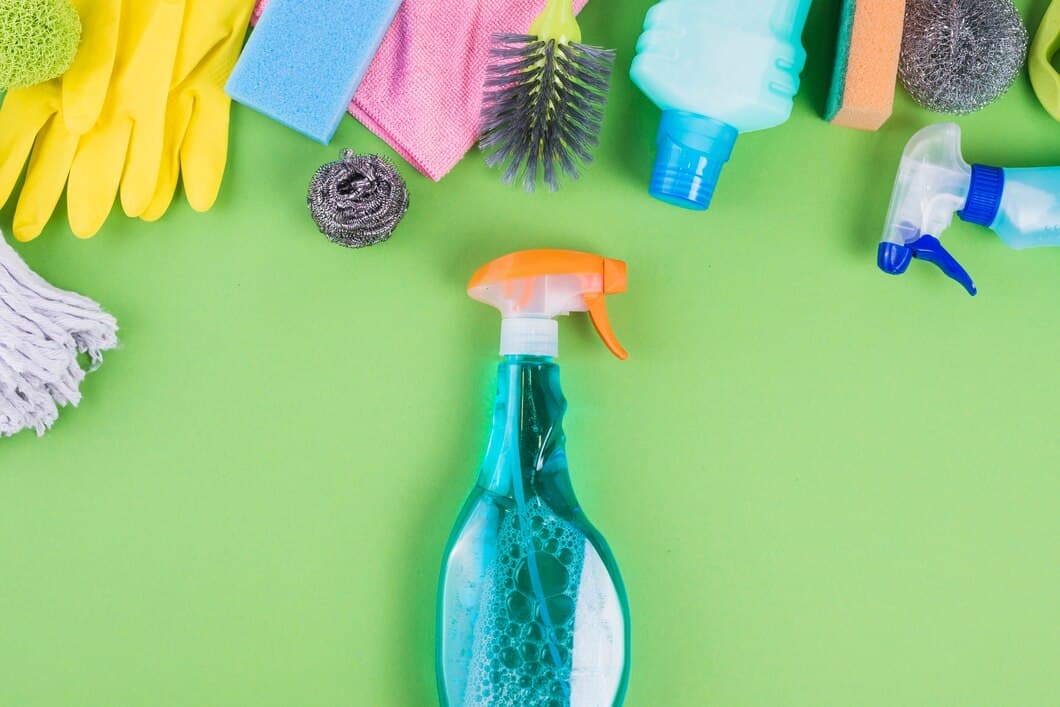

There are many ways to clean artificial grass, and the best method will depend on the specific type of grass you have. Some general tips include using a mild detergent and water, avoiding harsh chemicals, and rinsing thoroughly.
If you have a small area of artificial grass, you may be able to clean it by hand. Simply mix a mild detergent with water in a bucket, and then use a sponge or soft cloth to apply the solution to the grass. Be sure to rinse the grass thoroughly with water afterwards.
Brushing your artificial grass regularly is one of the most important things you can do to keep it looking its best. Use a soft-bristled brush to remove dirt and debris from the surface of the grass. Be sure to brush in the direction of the grain to avoid damaging the fibers. You should brush your artificial grass at least once a week, or more often if it is in a high-traffic area.
In addition to brushing, you should also rinse your artificial grass with water on a regular basis. This will help to remove any dirt or debris that has become embedded in the fibers. You can use a garden hose or a pressure washer to rinse your artificial grass. Be sure to avoid using too much water pressure, as this can damage the fibers.
If your artificial grass has become stained, you can clean it using a mild soap and water solution. Be sure to rinse the soap residue thoroughly after cleaning. You can also use a commercial artificial grass cleaner to clean your artificial grass. Follow the manufacturer's instructions for use.
By following these simple steps, you can keep your artificial grass looking its best for years to come.
Rinse your artificial grass periodically to help prevent a build-up of dirt, debris, and pollen. This is especially important in areas that receive a lot of rainfall, as the water can help to wash away any accumulated grime. To rinse your artificial grass, simply use a garden hose or pressure washer. Be sure to rinse the grass in all directions so that all areas are cleaned. You should rinse your artificial grass at least once a month, or more often if it is heavily used.
In addition to rinsing, you may also want to brush your artificial grass on a regular basis. This will help to remove any loose dirt or debris that may have accumulated on the surface of the grass. You can use a soft-bristled brush or a leaf blower to brush your artificial grass. Be sure to brush the grass in all directions so that all areas are cleaned. You should brush your artificial grass at least once a week, or more often if it is heavily used.
By following these simple steps, you can help to keep your artificial grass looking and performing its best for years to come.
If you notice dirt or debris collecting on your artificial grass, you can use a stiff brush to sweep it away. This will help to prevent the debris from becoming embedded in the fibers and causing stains. For tougher stains, you can use a mixture of water and vinegar or a store-bought artificial grass cleaner. Be sure to test the cleaner in an inconspicuous area first to make sure it doesn't damage the grass.
If your artificial grass becomes stained, you can try to remove the stain with a mixture of water and vinegar. Be sure to blot the stain, do not rub it, as this can damage the fibers of the grass. You can also try using a store-bought artificial grass cleaner. Be sure to follow the instructions on the cleaner carefully.

If you want to remove smaller debris from your grass, you can use a water hose to rinse it. However, if the stains just won't budge, it might be time to break out some cleaning products.
Be sure to use cleaning products that are specifically designed for artificial grass. These products are usually mild and won't damage the fibers or backing of your grass.
To clean your artificial grass with a cleaning product, simply mix the product with water according to the directions on the bottle. Then, use a soft cloth or sponge to apply the solution to the stained area. Allow the solution to sit for a few minutes, then rinse it away with water.
If you're not sure which cleaning product to use, you can always contact the manufacturer of your artificial grass. They will be able to recommend a product that is safe for your grass.
Inspect your artificial grass regularly, especially after rain or humid weather. If you notice any signs of algae or mold growth, it's important to address it promptly to prevent further spread. To treat algae, you can use a vinegar solution. Mix equal parts white vinegar and water in a spray bottle, then apply it to the affected areas. Allow the solution to sit for 15-20 minutes, then rinse it away with clean water.
If you're dealing with mold, you can use a bleach solution. Mix 1/4 cup of bleach with 1 gallon of water in a spray bottle, then apply it to the affected areas. Allow the solution to sit for 10-15 minutes, then rinse it away with clean water.
After treating for algae or mold, allow the artificial grass to dry completely before allowing pets or children to use it. It's also a good idea to repeat the treatment every few months to prevent future growth.
Deodorizing artificial grass is important for maintaining a fresh and clean environment. There are several methods you can use to remove unpleasant odors from artificial grass, including using a deodorizing spray specifically designed for artificial grass. These sprays typically contain enzymes that break down the organic compounds that cause odors.
You can also use a mixture of equal parts water and white vinegar to deodorize artificial grass. Pour the mixture into a spray bottle and apply it to the grass, then scrub with a stiff brush or broom. Rinse the grass with clean water and allow it to dry completely.
Another effective way to deodorize artificial grass is to use baking soda. Sprinkle baking soda over the grass and allow it to sit for several hours or overnight. Then, brush or sweep the baking soda away and rinse the grass with clean water.
If these methods do not remove the odor, you may need to hire a professional cleaning company to clean your artificial grass. Professional cleaners have access to more powerful cleaning agents and equipment that can remove even the most stubborn odors.
Inspect your artificial grass regularly for any damage, such as tears, holes, or loose seams. If you find any damage, repair it immediately to prevent further damage and keep your artificial grass looking its best.
To repair a tear, use a needle and thread to sew the edges of the tear together. If the tear is large, you may need to use a patch of artificial grass to cover it.
To repair a hole, cut a piece of artificial grass that is slightly larger than the hole.
Apply a thin layer of adhesive to the edges of the hole and the patch. Press the patch into place and allow the adhesive to dry.
Seasonal maintenance is essential for keeping your artificial grass looking its best year-round. Spring and summer are the best times to give your artificial grass a thorough cleaning, as this is when it is most likely to accumulate dirt and debris. In the fall and winter, you can focus on removing leaves and other debris that may have fallen on your grass.
To clean your artificial grass, start by sweeping or hosing it down to remove any loose dirt or debris. Then, use a mild soap and water solution to scrub the grass, taking care not to use harsh chemicals that can damage the fibers. Once you have scrubbed the grass, rinse it thoroughly with water and allow it to dry completely.
In addition to regular cleaning, you should also inspect your artificial grass regularly for any signs of damage. If you find any tears or holes, you can repair them using a patch kit or by hiring a professional.
By following these simple tips, you can keep your artificial grass looking its best for many years to come.
**How often should I clean my artificial grass?**
Artificial grass can last up to 20 years, but it requires regular cleaning to maintain its appearance and performance. The frequency of cleaning depends on a number of factors, including the amount of traffic it receives and the climate in which it is installed. In general, it is recommended to clean artificial grass at least once a month, and more often if it is used frequently or if it is exposed to a lot of dirt and debris.
**What is the best way to clean artificial grass?**
There are a few different ways to clean artificial grass, but the most effective method is to use a power washer. A power washer will remove dirt, debris, and mold from the grass, and it will also help to restore the grass's original color and texture. If you do not have a power washer, you can also clean artificial grass by hand using a stiff brush and a mild detergent. Be sure to rinse the grass thoroughly after cleaning to remove any residual detergent.
Always keep your artificial grass swept. This is especially important in the fall when there are leaves falling from trees. By removing the leaves, you will prevent them from staining the grass.
Use a leaf blower to sweep off loose debris. You can also use a broom, but a leaf blower will be more effective.
Rinse the grass with water. This will help to remove any dirt, debris, or stains that have accumulated on the grass. You can use a hose with a nozzle to rinse the grass, or you can use a bucket of water and a sponge.
The best way to clean artificial grass is to use a mild soap solution and a soft brush. Avoid using harsh chemicals or detergents, as these can damage the grass.
Artificial grass should be cleaned regularly to keep it looking its best. The frequency of cleaning will depend on the amount of use it gets. If the grass is used frequently, it should be cleaned every few weeks. If it is used less often, it can be cleaned every few months.
Pressure washers can be used to clean artificial grass, but it is important to use a low-pressure setting. High-pressure settings can damage the grass.
Cleaning artificial grass has many benefits, including:
To sum up, with a little care and attention, maintaining an artificial lawn is simple and straightforward, allowing you to enjoy its many benefits for years to come.
Regular cleaning and maintenance can extend your lawn's lifespan, preserving its aesthetic appeal.
Disclaimer: The content of this article only represents the author's personal opinion and has nothing to do with the position of this site. If the content infringes your legitimate rights and interests, please contact us in time, we will arrange processing as soon as possible




